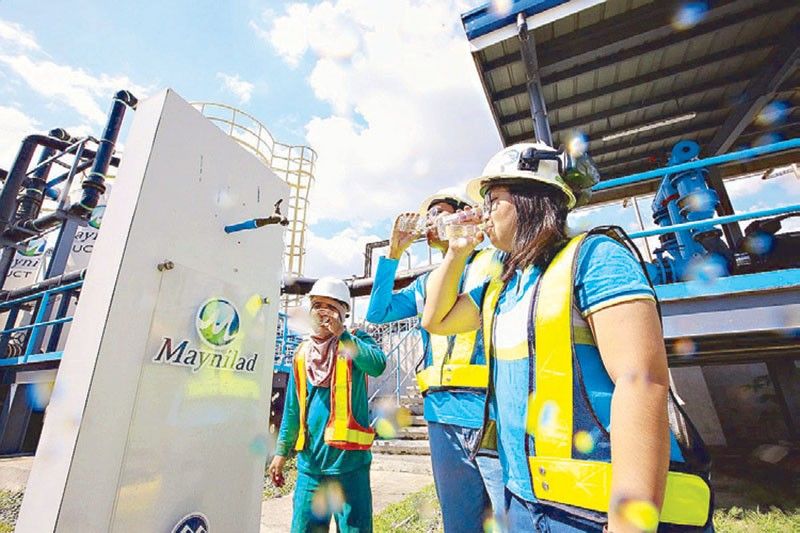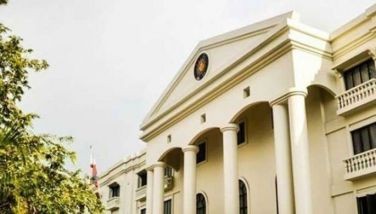Maynilad facility processes wastewater for potable reuse

MANILA, Philippines — Maynilad has started operating a reclamation facility and new water treatment plant that provides potable water using a “direct potable reuse” process.
The company says the facility, which provides potable water to two pilot barangays in Parañaque City, is the first of its kind in Asia.
Under this system, Maynilad New Water officer-in-charge Danica Parafina said the facility provides at least 10 million liters per day (MLD) to barangays San Dionisio and San Isidro and covers at least 38,700 customers.
The facility became operational on Oct. 26.
“Maynilad proved that it can treat and recycle water. Our common practice is the wastewater goes to the creaks, rivers. But now, Maynilad showed the opportunity that water can be treated so that customers can again reuse it,” Parafina said in an interview recently with The STAR.
She pointed out that Maynilad started to develop other sources of water after the 2019 experience where the water level in Angat Dam reached its lowest critical level of 157 meters amid the El Niño phenomenon.
“Maynilad saw the opportunity that wastewater can be treated so that customers can reuse it and lessen our dependence on Angat Dam,” Parafina pointed out.
Aside from this, the increasing population and the effect of climate change were among the reasons on the need to develop new alternative sources of water, she added.
“That’s the problem if we have climate change, during summer and El Niño, the water levels of dams go down. When there is typhoon, there is an increase in the turbidity in the water due to landslide, illegal cutting of trees. We have difficulty in treating water at the La Mesa Water Treatment Plant,” Parafina noted.
She said the Maynilad Parañaque Reclamation Facility and New Water Treatment Plant is the first in Asia in terms of direct potable reuse.
“When it comes to potable water, we have two types: the indirect potable reuse and direct potable reuse. Indirect potable reuse pertains to water coming from dams and being treated. After customers use it, the water is treated in the wastewater facility and the wastewater facility returns the water to the dams,” she explained, citing the case of Singapore as an example.
However, under the direct potable system, the raw water is sourced from wastewater.
“In Asia, we were the first to have direct potable reuse, although Singapore pioneered new water from indirect potable reuse (by returning wastewater to the dams). The Philippines was the first in Asia in terms of direct potable reuse,” Parafina said.
She stressed, though, that the wastewater is treated and undergoes several purification processes, including ultrafiltration and disinfection, before this goes back to the distribution pumps of Maynilad.
“The water undergoes various treatments to make sure the water is safe and compliant to the Philippine national standard for drinking water. Every month, the Metropolitan Water Works and Sewerage System conduct inspection and we also submit a report to the Department of Health on water quality. We also conduct hourly sampling to check the quality of water before it is released to the customers,” she added.
According to Parafina, a blind testing was also conducted to determine the preference of customers.
She said that based on market research, 43 percent of residential areas preferred new water and 56 percent of commercial establishments also backed the use of water from the treatment facility.
“Residential customers said that the new water was tasteless compared to the water from La Mesa since it underwent various filtration processes. Commercial establishments also want to have new water as an alternative source,” Parafina said.
She said an information campaign is ongoing to educate customers to change their mindset on the water from wastewater.
“We want to change their mindset that the wastewater is not safe to reuse. We want to inculcate to the minds of the public that wastewater should not end up in creeks as it can still be reused,” Parafina stressed.
The facility in Parañaque, according to her, measured 28,000 square meters and is operated 24 hours a day. It also has at least 30 engineers and other employees who work shifts.
For his part, Maynilad wastewater engineer Ian Gatchalian said the facility treats the wastewater of the entire city.
“We treat wastewater from the household and rainwater. The water in the drainage or septic tank passes in the conveyance and goes to the treatment plant. The facility covers the entire Parañaque City,” Gatchalian said.
He added that the Parañaque Water Reclamation and Recycling Facility has a capacity of 76,000 MLD and can serve at least 174,000 people.
According to Gatchalian, the facility was turned over to Maynilad on June 21, 2020.
- Latest
- Trending
































